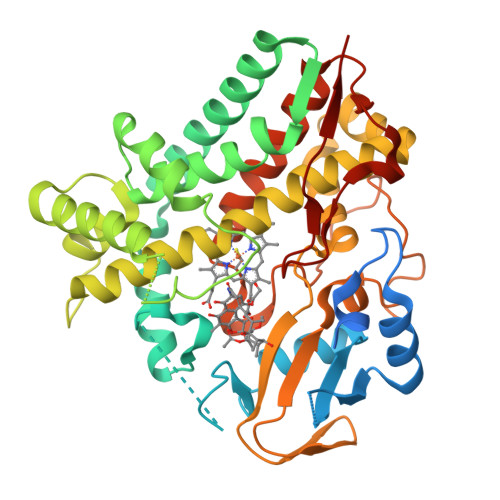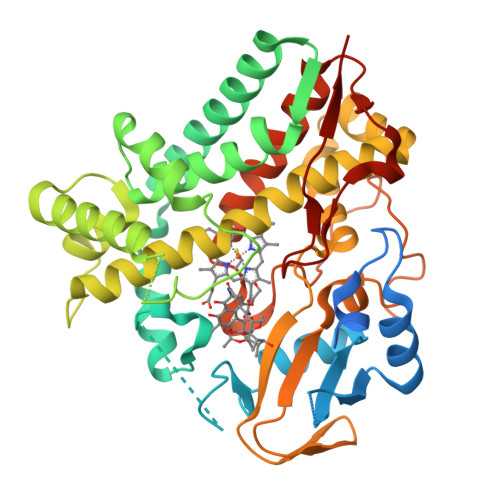Deciphering the late steps of rifamycin biosynthesis.
Qi, F., Lei, C., Li, F., Zhang, X., Wang, J., Zhang, W., Fan, Z., Li, W., Tang, G.L., Xiao, Y., Zhao, G., Li, S.(2018) Nat Commun 9: 2342-2342
- PubMed: 29904078
- DOI: https://doi.org/10.1038/s41467-018-04772-x
- Primary Citation of Related Structures:
5YSM, 5YSW - PubMed Abstract:
Rifamycin-derived drugs, including rifampin, rifabutin, rifapentine, and rifaximin, have long been used as first-line therapies for the treatment of tuberculosis and other deadly infections. However, the late steps leading to the biosynthesis of the industrially important rifamycin SV and B remain largely unknown. Here, we characterize a network of reactions underlying the biosynthesis of rifamycin SV, S, L, O, and B. The two-subunit transketolase Rif15 and the cytochrome P450 enzyme Rif16 are found to mediate, respectively, a unique C-O bond formation in rifamycin L and an atypical P450 ester-to-ether transformation from rifamycin L to B. Both reactions showcase interesting chemistries for these two widespread and well-studied enzyme families.
Organizational Affiliation:
Shandong Provincial Key Laboratory of Synthetic Biology, CAS Key Laboratory of Biofuels, Qingdao Institute of Bioenergy and Bioprocess Technology, Chinese Academy of Sciences, Qingdao, Shandong, 266101, China.




















